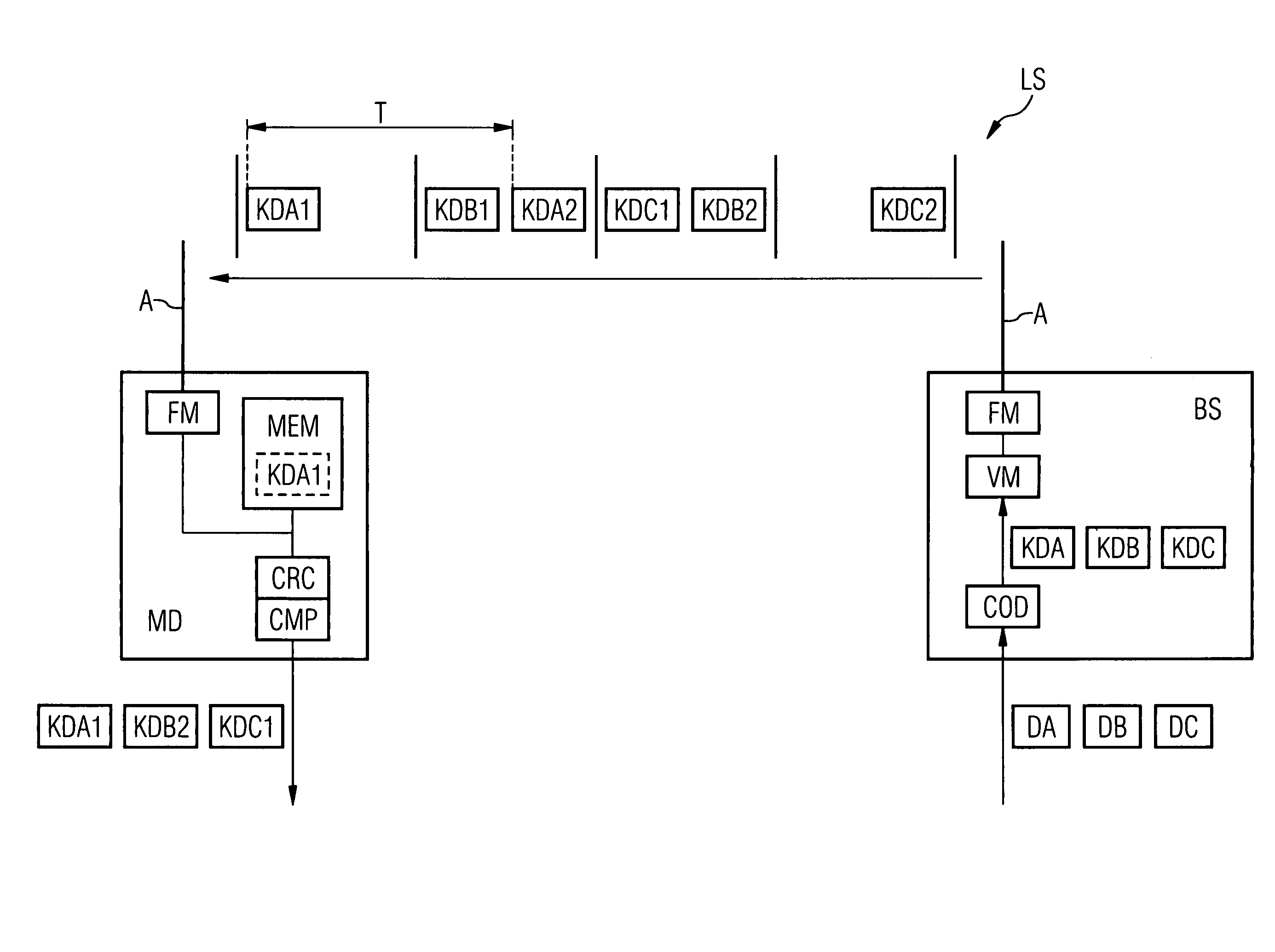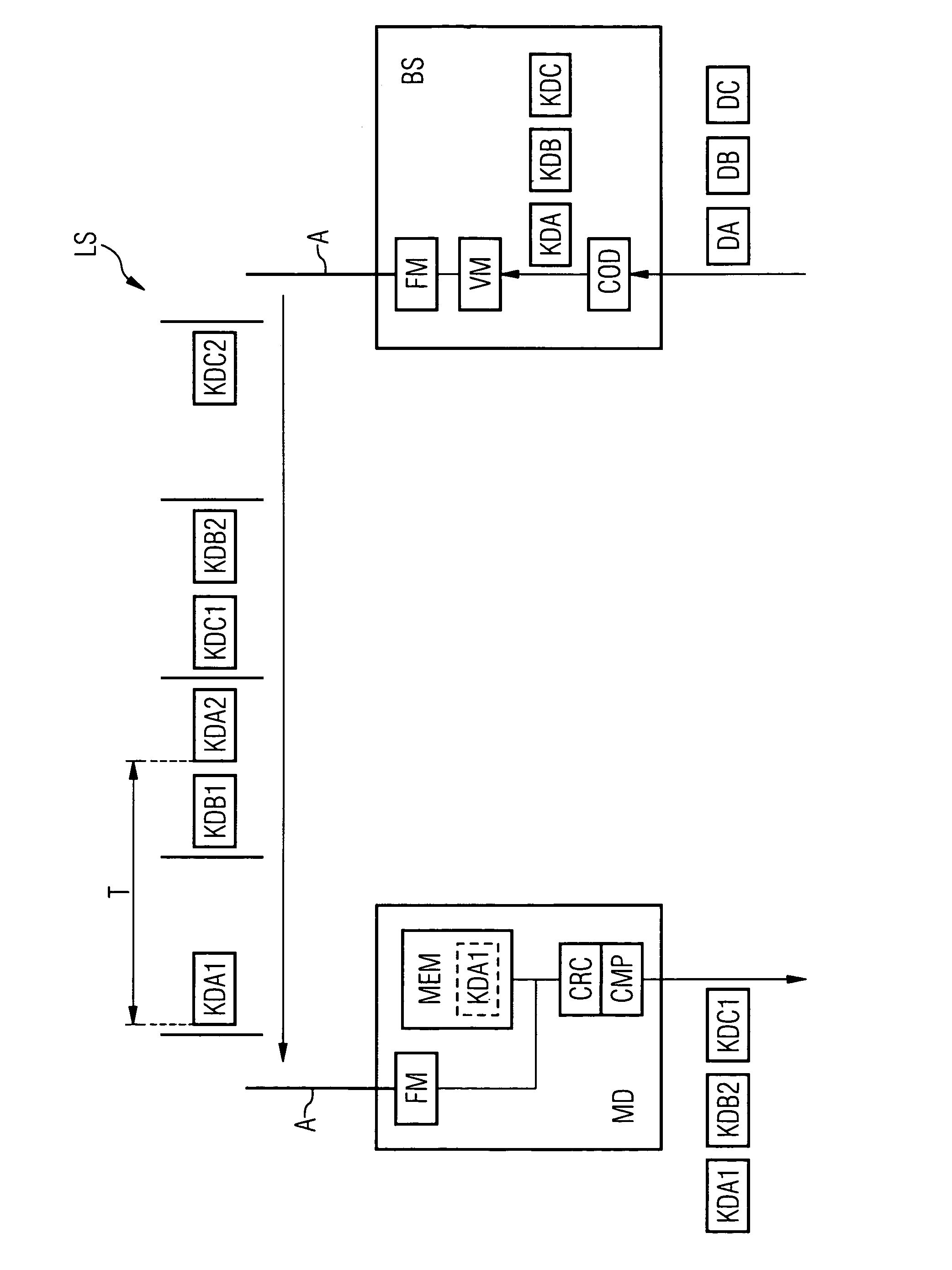Method for improving the quality of voice transmission via a radio interface
a radio interface and voice technology, applied in the field of improving the quality of voice transmission via radio interface, can solve the problems of local signal extinction, multipath reception and radio wave superimposition, and impair the speech quality experienced, and achieve the effect of reducing channel-specific interference, low data rate, and least delay
- Summary
- Abstract
- Description
- Claims
- Application Information
AI Technical Summary
Benefits of technology
Problems solved by technology
Method used
Image
Examples
Embodiment Construction
[0020]The figure shows diagrammatically a base station BS and mobile terminal equipment MD. The base station BS can, for example, be achieved according to the DECT or GSM standards or as what is known as a WLAN access point. The mobile terminal equipment MD can, for example, be a cordless telephone according to the DECT standard, a mobile phone according to the GSM standard or another piece of mobile terminal equipment, such as a laptop or PDA (Personal Digital Assistant) with a WLAN interface.
[0021]The mobile terminal equipment MD is coupled via a radio interface LS to the base station BS and it is assumed that there is a wireless real time speech connection. The radio interface LS is indicated in the figure by a horizontal arrow and can, for example, be configured according to the DECT or GSM standard or according to an IEEE-802.11 WLAN standard. The radio interface LS preferably comprises a plurality of transmission channels for voice and / or data transmission, so a plurality of l...
PUM
 Login to View More
Login to View More Abstract
Description
Claims
Application Information
 Login to View More
Login to View More - R&D
- Intellectual Property
- Life Sciences
- Materials
- Tech Scout
- Unparalleled Data Quality
- Higher Quality Content
- 60% Fewer Hallucinations
Browse by: Latest US Patents, China's latest patents, Technical Efficacy Thesaurus, Application Domain, Technology Topic, Popular Technical Reports.
© 2025 PatSnap. All rights reserved.Legal|Privacy policy|Modern Slavery Act Transparency Statement|Sitemap|About US| Contact US: help@patsnap.com


